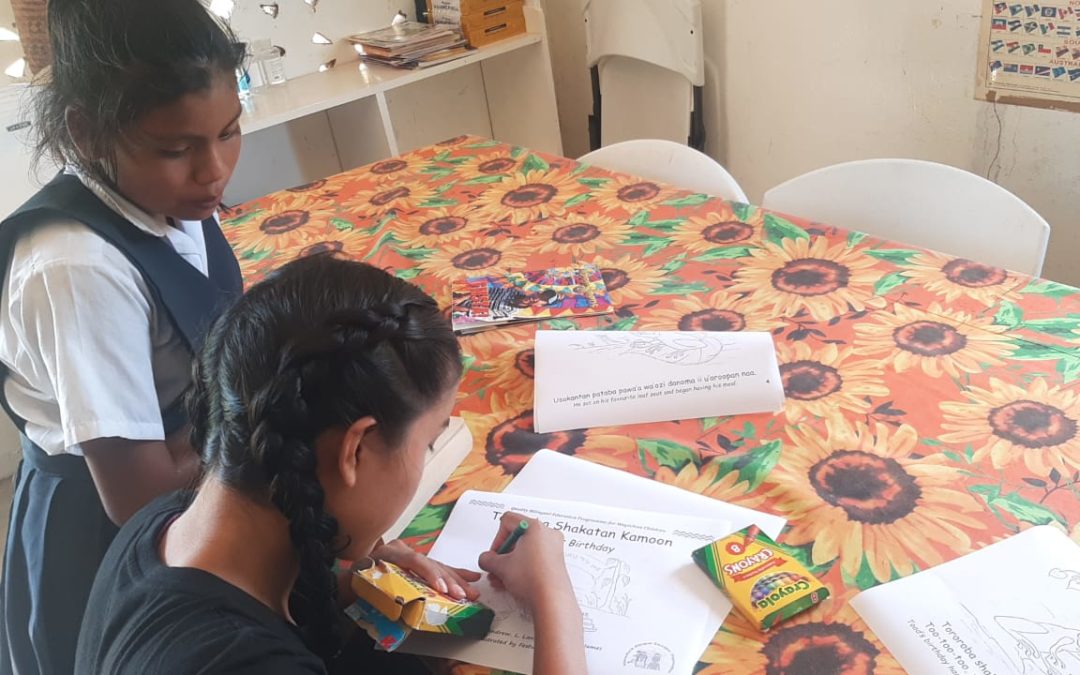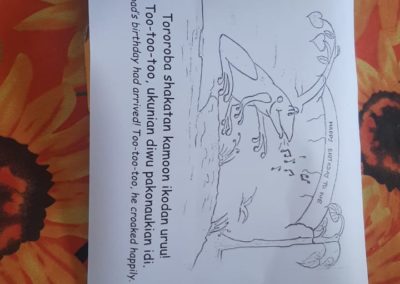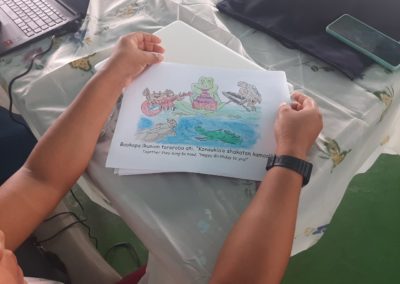During the month of July, the Local REIBA team in Aishalton, Guyana has been working arduously in preparation for the start of the school year in September. Currently, this team supports three schools–Sawariwau Nursery, Maruranau Nursery, and Karaudarnau Nursery–which have implemented an Intercultural Bilingual Education (IBE) program at the nursery level, and the team hopes to continue this process at the primary level in the next year. These educational programs have had great success due to the local efforts to strengthen IBE. One key to this success has been community participation, an integral part of the IBE process and the community education which REIBA seeks to embody.
One of the main community efforts over the past few months was the creation of Grade 1 bilingual children’s books for the Wapichan community which use both of the local languages: the national (English) and the native language (Wapichan). These books not only educate the children that read them, but also serve as materials which build community and reflect a shared history.
Fr. Joel, the parish priest of the Saint Bellarmine Church in the Aishalton community and the team leader for the local IBE program there, describes the process of creating these unique books: “Preparing these story books involves gathering community members and writing stories together to suit the different topics in the curriculum. Local artists then illustrate these stories, and a group of young adults color them. The finished product is truly a work of the communities who are happy to see their children reading books depicting scenes from their daily lives.”
The community is involved throughout this process–before, during, and after–playing an integral role in this collective effort to develop educational materials for the children of the community. This education is a continual learning process, not only for children, but also for professors, families, leaders, and the local team.
For this reason, the Aishalton REIBA team organized a reflection and evaluation workshop in July for the teachers from the three local nursery schools, providing an opportunity to “reflect on [their] mission as educators.” During this session, the group analyzed challenges, approaches, and solutions that they had experienced in the schools, working together to find new ways to continually improve the IBE process. Although this workshop only lasted one day, it was very fruitful and served as a reflection space for the local educational community. The participants shared their experiences, with everyone highlighting the importance of involving families and the community in childrens’ education in order to guarantee a quality holistic education.
Fr. Joel mentioned that: “the teachers appreciated the opportunity to share ways of delivering the adapted intercultural bilingual education nursery curriculum and overcoming teaching challenges such as dealing with special education needs children.” For this, and so much more, thank you to the Local REIBA team in Aishalton for committing to creating these important reflection spaces!
Community involvement is important for any type of education, but this aspect becomes even more fundamental when it comes to an Ethnoeducation which is intercultural and bilingual. The goal of this educational approach is to develop a curriculum that is aligned with the life of the indigenous communities which incorporates their native language, culture, cosmovisions, and knowledge; these local understandings often come directly from the wisdom of the elders or community leaders who understand this education’s vital importance for their children and young people who will continue to carry on these traditions.
As IBE is so closely connected to community life, it is important that the family members of each student also commit to this education in whatever way they can, continuing to motivate and support their children in the valuation of, and learning from, their own unique way of life. Because of this, REIBA continues to emphasize the importance of not only an intercultural bilingual education or an indigenous education, but a collective, community education that includes everyone. Together we weave the web!






